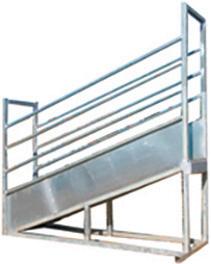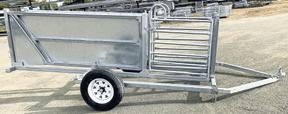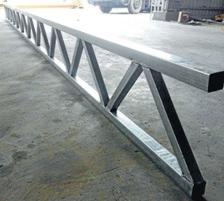












February Edition: January 27, 2023
March Edition: February 24, 2023
April Edition: March 24, 2023
May Edition: April 28, 2023
June Edition: May 26, 2023
July Edition: June 23, 2023
August Edition: July 28, 2023
September Edition: August 25, 2023
October Edition: September 22, 2023
November Edition: October 20, 2023
December Edition: November 17, 2023
Rebecca joins LLS following nine years with Agriculture Victoria, where she worked in the animal health and welfare, compliance and meat and wool teams.




She has experience in sheep, cattle, goat, pig and poultry production, as well as emergency response and more.
Now based in Deniliquin, Rebecca said she is excited to explore the local area and meet local landholders.


“I have a strong interest in livestock and managing country for improved sustainability and profitability, while also looking after the people involved,” she said.
“I am keen to get out and about around the Murray region, meet people and work on new projects while learning more about cropping and other industries the region has to offer.”
Growing up on cattle properties in north Queensland, Rebecca has a degree in Animal Science and Plant and Animal Biosecurity studies from the University of Queensland.
Since joining LLS, Rebecca has also taken on a knowledge broker role with the Southern Drought Innovation Hub.

“I am very interested in this avenue of work and believe this can have a large impact on rural and regional communities through economics, longevity and community health and mental wellbeing.
“I will be working on existing and developing projects around sustainability, productivity and managing variable climatic conditions.
“So, if you are interested to know what the Innovation Hub is doing, just ask, I’d love to talk to people about it!”
In her spare time Rebecca is keen on horse riding, social sport, helping on the farm where she now lives and exploring the Murray region.


“Getting to know the region and local landholders is something I’m really looking forward to.
“As part of my role I will be looking for grants and funding opportunities and will be involved in a variety of
different projects and events, so you should start to see my face around.
“If you do see me out and about, please say ‘hi’ and have a chat about what you would like to see in the region from LLS and projects that you might be keen to be involved in.”
In her new role, Rebecca also joined the FARMtalk team as a monthly contributor.
You can contact Rebecca on 0436 342 086, email rebecca. stacey@lls.nsw.gov.au or visit the LLS offices at 449 Charlotte Street, Deniliquin NSW 2710.
The project considered the different landscapes, affordability, and analysis method, with two cameras – a Vayu HD-Gen 2 and Panasonic GH5 4K resolution video operating at 60 frames a secondmounted to the side of a helicopter flying at a height of 272 feet and speed of 30-50 knots.
The Vayu full high density, long wave uncooled thermal imager records at 60 frames a second. With the resolution, the Panasonic’s 25mm wide angle lens and high frame rate is able to capture a large field of view yet maintain enough definition to easily detect and identify the target species in a broad search area.
Western NSW Local Land Services Senior Biosecurity Officer Suzie Holbery said private consultants were available to analyse the data and it was important to have a clear method for this analysis, and that it was repeated each survey.

“For example, decisions need to be made on the distances which you will accept for identifiable targets,” she said.
“Animals observed beyond 200m may be outside the sample area. Experts in animal surveys and limitations

For
of the equipment will be able to guide you on making these decisions.
“There is software available that has been designed to detect species, alternatively you can use trained observers to review the footage and make a determination as to the species.”
Ms Holbery said using a thermal survey for monitoring has been incredibly valuable to the project, providing density data for reporting back to funding partners that their investment had been successful.
“The results also provide the evidence we are often looking for to prove to stakeholders the issues we have encountered and the distribution of the pests,” she said.
“The population of your target species needs to be considered high in order to get meaningful results from the survey.
“For this reason, the location of the survey should be conducted at sites where the density is predicted to be highest from the information you already have.
“Thermal surveys require very cool overcast weather, limiting them to the winter months.”
Rocky landscapes can retain heat from sun exposure during the day which can affect the ability to detect animals in the landscape.
For most parts of Australia, July/August is the best time and generally suitable conditions are achieved just after sunrise and before sunset (helicopters are routinely not allowed to fly at night). Fixed wing aircraft, although cheaper to run, travel at speeds too fast for effective operation of the equipment. Unmanned aircraft/drones are an alternative, provided the barrier of operating within line of sight can be overcome.
“Special approval can be sought from CASA (Civil Aviation Safety Authority) if the location is deemed remote. For the surveys I have implemented at Hay, NSW, using a helicopter was the best option,” Ms Holbery said.
The NSW Vertebrate Pest Research Unit supported the thermal imaging project by providing technical advice on strategic pest animal management, research outcomes, eg GPS collaring, animal ethics approval, and survey design and analysis advice.
For information on the humanness of invasive animal control methods go to https://pestsmart.org.au
Using high resolution thermal imagery for surveying vertebrate pest populations has been evaluated by Western NSW Local Land Services in the Riverina at Hay, Balranald and Booligal.They actively sought out farming land, and a sub-division of a vineyard provided the perfect opportunity. On that Moama block they developed their own vineyard and olive grove, and built their dream home.

Ten years later, the wines and olive oils produced from Murray Gums Estate are popular with regional restaurants and everyday consumers. It has made the move from Melbourne and a completely different industry to farming on the Murray a successful one.
“In Melbourne we were associated with the building industry, so this was totally out of our comfort zone,” Dale said.
“A lot of people ask how we learned how to do it all, and I tell them ‘Mr Google’.
“What we have learned in farming compared to the fairly constant Melbourne building industry is that there are so many variants - climate, water and disease are just some of them.
“You have to learn to grow and work with it.”
Job one for the Bowles’ when they moved on to the 30 acre property was to change the grape varieties. From their vines they produce only a white Chardonnay and a red Cabernet Sauvignon.
Next was to plant olive trees around the boundary330 of them in fact.
“The idea was to screen the vineyard to minimise wind,” Dale said.
“With Angela’s Italian heritage, we went with olive trees.
“Murray Gums Estate is planted with Frantoio, the most noted olive oil variety of Tuscany, Italy, and one of the most highly acclaimed oil varieties in the world.
DALE BOWLES“Frantoio olives have also well proven themselves in most olive growing regions of Australia, and they love the climate of the Murray River.
“Frantoio olive oil can be characterised as very fruity with a wonderful aroma.
“As well as being extremely fruity the oil also has a hint of green apple, with a scent of green leaves and grass, a small bitterness and more so pungent flavour, although nonetheless the sensation which this olive oil leaves is sweet, somewhat astringent and an almond flavour.”
The olives are processed on site at the estate, with the Bowles’ relying on the help of family and friends to harvest the olives by hand.
“We have a family and friends day, and we get everyone to help us comb the olives on to the nets below.
“We only make small quantities of olive oil, up to about 1000 litres a year, but what happens with olives is the yield can be variable.
“We’ve had a good uptake of our olive oils in local restaurants, and the same with our wines.
“We mostly do half litre bottles of oil, we try and keep it boutique, but we can also do wholesale.
“We do get a lot of help, but it is tough work and we’re always looking for more family and friends,” Dale said with a laugh.
The wines are produced off site, with the Bowles’ using winemakers at Echuca’s St Anne’s Winery to produce their Chardonnay under the Murray Gums Estate label. The reds go to winemakers at Wild Duck Creek Estate in Heathcote to produce the Murray Gums Estate Cab Sav.
The fruit not bottled is sold in bulk to St Anne’s to use in their own blends.
A lot of thought went into the position of the vineyard, with the rows running east-west, providing more shade and reducing the impact of any heatwave bursts during summer.
“The land along Murray Gums Estate is flat with powdery loam overlaying a deep clay sub-soil,” Dale said.
“A long, slow-ripening period and continental climate are characteristics of the Perricoota region.
“Murray Gums Estate is a relative newcomer to the Perricoota wine growing region, but we don’t see this as a disadvantage.
“We are not restrained by the traditional mindset and can go about implementing quality driven practices throughout the vineyard.”
Dale and Angela Bowles were first drawn to the Echuca-Moama area as holiday makers, but it did not take long for them to see more potential in the region.“Murray Gums Estate is planted with Frantoio, the most noted olive oil variety of Tuscany, Italy, and one of the most highly acclaimed oil varieties in the world.”
While Murray Gums Estate products have grown in popularity as the Bowles have developed their farming practices, they say it is more of a passion project.




“It is a lifestyle for us,” Dale said.
“The products sell quite well locally, but it is more of a passion for us.
“Running the vineyard takes the most time.
“As a working farm there are different processes at different times of the year.
“Just after winter is the pruning, leading into the growing season.
“We harvest the white grapes in February and the reds in March, and then take a little break in April.

“May is the olive harvest, and all our olive and grape harvest is by hand.


“We then try and take a decent break over the winter, and take a holiday somewhere if we can.”
Also keeping the Bowles’ busy is the natural progression to setting aside a part of the property as a
wedding and events venue. But this is where one of their three children - daughter Sarah - steps in to manage the day-to-day.
“It would have been about 2016 when we were approached by a local couple, who we know, to be married on the property.
“So that wedding and event venue part of the businesses has grown from there.
“Our daughter runs that now and obviously that area was recently flooded, but should recover well.
“Our three children and six grandchildren were all based in Melbourne, but Sarah and her husband Drew made the tree change, and Sarah now works full time with us.
“They live in a second dwelling on the property with us now, but they are building their own home in town.”
While there is a lot of work involved in running their property, the Bowles’ say it is “a place where you can simply enjoy life“.



Here is a brief animal health update on what we have been seeing and what to look out for throughout wet conditions.
Many producers are experiencing this in their flocks.
Scours can be caused by worms, coccidia, bacteria such as yersinia or salmonella, or due to nutrition.
A post-mortem can be helpful to determine the cause of deaths associated with scour and to determine the best treatment.
Regular worm egg counts (WEC) help monitor worm burdens or the presence of coccidia, identifying when a drench is required.
Many producers are reporting that their livestock are just not growing as well as previous years.
Although there has been lots of feed around, the feed quality has been variable.
You may need to consider supplementary feeding to improve condition and growth rates.
If you are concerned about the condition of your livestock, you should contact your vet to discuss.
Issues with wet wool and scouring in flocks has increased the risk of flies and flystrike this season.
Make sure you are on the lookout for strike in your sheep and treat with an appropriate flystrike treatment.
Crutching or shearing can also reduce the risk of flystrike in your sheep.

For more information on flystrike, head to www. flyboss.com.au.
Wet paddocks and yards have resulted in lame sheep this season due to foot abscess or footrot.
Footrot involves sweatiness between the toes and underrunning of the hoof.
Foot abscess is an infection within the foot that is seen as swelling, heat, and a pus discharge.
If you have lame sheep, it is best to have them checked by a vet.
This will help identify what is going on and advise of the most appropriate treatment.
If you are having any animal health issues in your flock/herd that you would like to investigate, or you would like to discuss any of the above, contact your local district vet by calling 1300 795 299. Otherwise, drop into a nearby Local Land Services office.
Recently we have seen the effect wet weather can have on livestock. We all know managing livestock health in ongoing wet conditions can be challenging.









Salaries, wages, and the costs of goods are increasing – it’s a challenging environment for even established small businesses.
In fact, more than half (57 per cent) of Australian businesses experienced an increase in the costs of doing business in the first quarter of this year.
A survey by software company Xero and professional services firm Accenture recently found that nine in 10 small businesses in Australia had at least one month of negative cash flow last year.
It also showed that 20 per cent of small businesses spend more than they earn for at least six months of each year.

With this in mind, it’s important to understand how your business can be impacted by disrupted cashflow and what options are available to mitigate potential financial stress
Bumpy cashflow can impact your operations in several ways including:
• Additional stress about meeting your input costs
• Challenges with forecasting what you should charge for your services and products
• Inability to take advantage of bulk purchasing lowcost stock
• Lacking a buffer to meet rising costs due to inflation, including insurance premiums
• Increased difficulty with planning
Check the ‘Set up cashflow statement’ tool at business.gov.au to help understand your cash flow. With those figures in hand, you may find you’re eligible for financial options, depending on your unique business circumstances.
With rising insurance premiums, businesses may reconsider their investment in particular aspects of their business insurance.
Instead of being locked into paying an annual premium upfront, there’s another, more flexible option called insurance premium funding (IPF).
The Australian Finance Industry Association says just under a third of businesses policies have opted for IPF.
This funding option allows businesses to pay monthly instalments, usually over a 10-month period. If you have multiple policies, you can also bundle them together, reducing your large upfront costs into one smaller monthly payment to cover your business risks.
Waiting for your customers and clients to pay your business can be frustrating, but there’s also value in unpaid invoices.
Did you know you may be able to borrow up to 80 per cent of the value of your customers’ unpaid invoices to your business?
Known as a cash flow finance loan, it does attract a variable interest rate, but helps unlock funds to run your business. Businesses don’t need property assets or working capital to secure the loan.
Freeing up the cash you have tied up in business stock is possible through inventory finance.
A broker can set this up, and it involves a financial institution paying for the stock up front, and the borrower making repayments when the stock is sold.
Some businesses opt for inventory finance so they can boost their range of stock, yet have less security at risk.
Meanwhile, your business could choose from a range of other financial options called asset finance. This type of finance is used to acquire assets or equipment needed for businesses to grow. Generally, this option allows a business to make use of an asset for a period of time in exchange for a regular payment.
This solution is applicable to a wide range of assets including heavy machinery used in construction and
agriculture,
Some of the most common types of asset finance include:
• Finance lease – wherein ownership of the asset is transferred to the borrower once the lease period has ended
• Rental agreement – the financial institution purchases the asset and rents it to the borrower for a fixed term, at the end of which the business can choose to return, replace, purchase or continue to rent the equipment
• Specific security agreement – formerly known as a chattel mortgage, this finance allows businesses to own the asset upon purchase and the financial institution secures the loan by registering a charge over the equipment
• Commercial hire purchase – the financial institution takes ownership of the equipment and hires it to the borrower with regular repayments
Contact the team at Grass Roots Finance in Deniliquin to discuss customised finance solutions for your current business circumstances.
 vans and vehicle fleets, or smaller items like coffee machines or commercial ovens.
Chantelle Shevels (pictured) is an authorised finance broker and owner of Grass Roots Finance.
vans and vehicle fleets, or smaller items like coffee machines or commercial ovens.
Chantelle Shevels (pictured) is an authorised finance broker and owner of Grass Roots Finance.
The economic conditions in Australia are rapidly evolving, with inflation increasing by its biggest margin since the introduction of GST.









The Clover4Bees project team met in Wagga on November 17 and 18 to inspect one of the first field experiments comparing the benefits of different forage legumes for honey bees.

The meeting was attended by NSW Department of Primary Industries staff and the industry advisory committee (IAC) members, including staff from Murray Local Land Services who oversee the project, guide direction and provide honey bee industry input.
The Clover4Bees project is a joint initiative between AgriFutures Australia and NSW DPI to do a preliminary assessment of more than 20 forage legumes for their potential value to honey bees.
Dr Richard Hayes, a senior research scientist with NSW DPI at Wagga, leads this two-year project.
Dr Hayes has evaluated pasture legumes for more than 20 years, but this is the first time researchers have paid close attention to the legume flower for honey production.
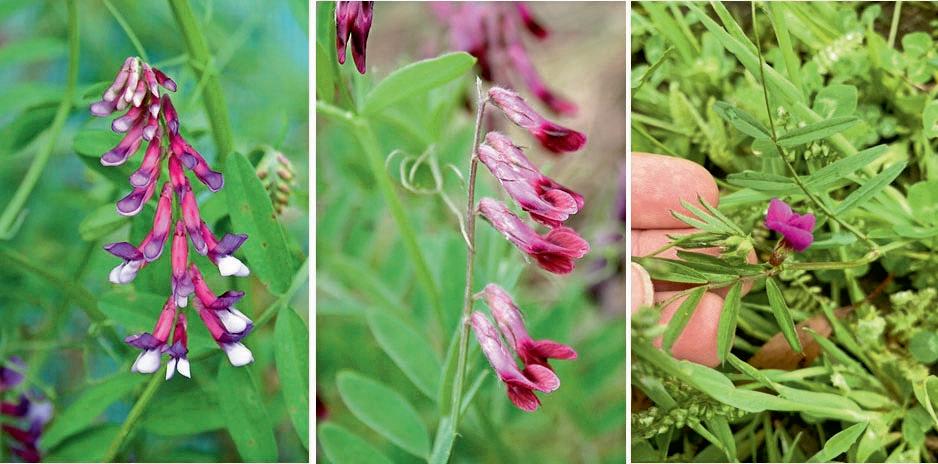
“Usually we are concerned with other agronomic traits in legumes, such as biomass potential, persistence or nitrogen (N) fixation,” Dr Hayes said.
“Examining legume flowers is new to all of us, so we are all having to learn new skills.”
James Kershaw, a fifth generation bee and sheep farmer from Gundaroo, sits on the Clover4Bees industry advisory committee and has had a long interest in exploring the potential of forage legumes for honey bees.
The Kershaw family have planted legume species in their sheep pastures for many years now, including purple vetch, balansa and arrowleaf clover.
But until now, there has been no scientific evaluation of the potential of these species for honey bees.

The Wagga experiment, or ‘flower garden’ as researchers loosely refer to it, is one of four established in 2022 across NSW.
It compares 22 annual or short-lived perennial legume species.
It includes many familiar species, like arrowleaf, balansa and white clover, but also some lesser known species.
“Species such as gland clover, bladder clover or eastern star clover are relatively new to agriculture and are probably underutilised by farmers,” Dr Hayes said.
But clovers are not the only species being tested in the Clover4Bees project.
Others such as biserrula and serradella are also included, as well as three types of vetch; woolly pod, purple and common vetch.
“It is too early to draw conclusions about which species offer the most potential to the honey bee industry,” Dr Hayes said.
“In fact, there are a handful of species that have not even started flowering in the field experiments, and this is just the first year of evaluation.”
Yet, there is great optimism among everyone involved.
One of the most exciting parts of this research is being able to work across two industries, pastures/grazing and honey bees, to achieve joint industry outcomes.
For more information about this project please visit www.agrifutures.com.au/related-projects/clover4beespilot-study/.
James Bisset





Despite a tough vintage, and the financial impacts of the COVID-19 pandemic, Rutherglen wines tasted success at two of the Australian wine industry’s leading wine competitions - the Rutherglen Wine Show and the Australian Fortified Wine Show.

With almost 1000 entries across 150 exhibitors from all over the country, the results from the annual event reflected the emerging trends within the industry.
Championing the local region was Pfeiffer Wines and De Bortoli Rutherglen Estate, who collected 10 special awards between them in the Rutherglen Wine Show.
The Best Australian Dry Red Table Wine of Show was awarded to Jen Pfeiffer for her 2021 ‘Rock It Like A Redhead’ Diamond Shiraz.
Pfeiffer Wines’ 2019 Durif collected Best Barrel Matured Table Wine (local grapes) while Hanging Rock Winery was awarded Best Table Wine (produced by a small winery) for its 2022 ‘Diplomat’ Cabernet Sauvignon.
The Fowles Wine team from Avenel travelled to Rutherglen to be part of the show and were delighted to be awarded Best Australian Dry White Table Wine Riesling for its ‘Ladies Who Shoot Their Lunch’ 2021 Riesling.

Fowles Wine chief winemaker Lindsay Brown said the win took him by surprise.
“We produce two really beautiful rieslings, however it’s usually our Stone Dwellers Riesling that historically wins awards,” Mr Brown said.
“I couldn’t believe it when I heard that it wasn’t that one which won. It was such a nice surprise.
“We’ve been consistent with how we produce the wine, and it’s really pleasing to see the judges liked it.”
In the Australian Fortified Wine Show, an extraordinary array of entries reinforced the strength of fortified wine production across Australia.
It also highlighted the key role the Rutherglen region plays driving quality across the category.
Pfeiffer Wines picked up three special awards in the Fortified Show, Morris Wines two, and Chambers Rosewood and Campbells both collected an award each.
Chairman of judges Andrew Santarossa, of Gapstead Wines, praised the calibre of wines entered in this year’s show.
“This year, entry numbers were 127 exhibits for the Australian Fortified Show and 829 exhibits for the Rutherglen Wine Show,” he said.
“It is a very healthy number of entries that underscores the importance and reach of these shows to the wine industry.
“With a changeover of over two thirds of judges from 2021, it was a changing of the guard as we endeavoured to return to a nationally balanced team and invited judges from across Australia.
“The diversity and high standard of these judges is reflected in the results.
“I am very grateful to the three panel chairs who undertook the role of mentoring our judges, associates, and stewards.
“This included fortified masterclasses that focused on variety, style, site, and cellar influences. They guided and encouraged their panels to bring forward the best wines for discussion and final scoring”
Mr Santarossa said the trophy winners were an “admirable reflection of what is exciting in our industry right now: wine quality, wine varieties, wine styles, regional diversity, and benchmark producers”.
“As I look into the class results, the importance of vintage conditions became clear,” he said.
“Flanked by the 2018, 2019, 2021, 2022 vintages, the 2020 wines as a whole were overshadowed. That demonstrates what a difficult vintage it was across the country.
“On behalf of the Rutherglen Agricultural Society, the wine show committee, and the entire judging panel, I would like to thank all of the exhibitors for their continued support, congratulate the trophy winners and proudly present these results.
“I would like to take this opportunity to thank the sponsors; your support of the Rutherglen Wine Show and Australian Fortified Wine Show along with the broader wine community is greatly appreciated.”
Commenting on the two shows, show committee chair Chris Pfeiffer OAM said after two pandemic years, he was pleased to see the show the forging ahead in its usual format.
“The quality of wines received this year have been outstanding,” he said.
“The show highlighted the challenges coming from the 2020 vintage, with few entries received from this vintage.
“A highlight of the Rutherglen Wine Show was the strength of the Shiraz classes, with a variety of styles rewarded.
“The judges, who came from all over Australia this year, appreciated coming together to taste and talk about wine.”
The De Bortoli Rutherglen Estate team were thrilled to pick up a number of major awards at the 2022 Rutherglen Wine Show.















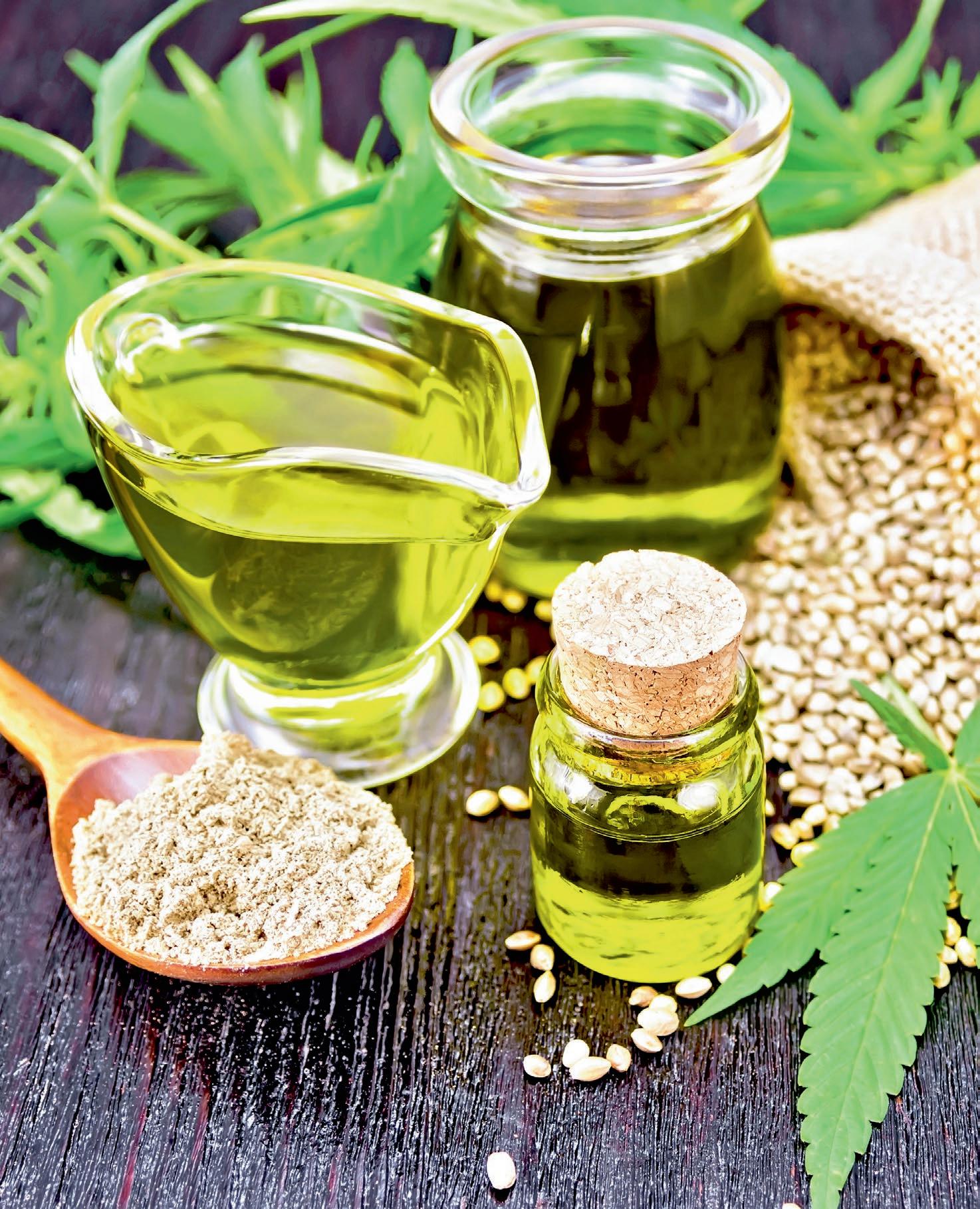
T
he Industrial Hemp Variety Trials (IHVT) program is an Australian-wide program of industrial hemp trials, co-funded by AgriFutures and the participating state and territory government agencies.

The key objective of the research trials is to develop individual grain and dual-purpose variety recommendations for time of sowing, based initially on local experience.
AgriFutures has appointed John as trial agronomist. He is tasked with providing technical advice to trial site operations, including site visits throughout the growing season, and facilitate capacity building for trial staff, field days and auditing.
John arrived in Hay in 1981 and took over the NSW Department of Primary Industries district agronomy reins from Bill Booth.
His wife Trudi later worked in the distance education office.
Together they restored the Presbyterian Manse in Pine Street back to its former glory, and John was
instrumental in the development of the permanent raised bed irrigation farming system, with the likes of the Maynard family and at Nullabor and Gundaline Stations
After leaving Hay in 1992, John and Trudi worked in Cambodia on the Mekong irrigation systems for two years on behalf of the Department of Agriculture/UN/ AUSAID.
Later, with the Australian Centre of International Agricultural Research, he took the Aussie ‘bottom up’ Landcare group concept to the people of the archipelagos of the Philippines, during their people power revolution.
For the past 12 years John has pioneered the industrial hemp industry nationally.
“Not only is the grain a superfood, but the potential for biomass is incredible,” he said.
“It makes great insulation, is termite and fireproof and will one day take over from timber and plastics, and is already used in Mercedes and BMWs.
“My own house is made from hemp blocks.”
Despite some past concerns, industrial hemp is a different line of cannabis.
It has a low THC content, one which does not produce the ‘high’ associated with the term.
And John is keen to educate the wider audience on the benefits of growing hemp commercially for its many products.
“These trials are funded by the government because they can see that hemp will soon be just another useful crop for Australia,” he said.
“Grain yields are getting up to 2t/ha, and at $3,500 a tonne it is worth considering contracts.
“Biomass is over 10t/ha dry matter and contracts over $500/t baled presently.
“There is already 3,000 hectares under crop across the country, including at Hillston and Mildura.
“We are also in the middle of publishing an industrial hemp BMP growers guide.”
Former Hay district agronomist John Muir is leading the Commonwealth Government’s industrial hemp trials in nine locations across Australia. Matt Woodward from the Murray-Darling Basin Association watches on as students conduct a water bug survey.
Matt Woodward from the Murray-Darling Basin Association watches on as students conduct a water bug survey.
Wiradjuri man Gubba Woods explains how to use a didgeridoo to a student.
Hay district students swapped indoor learning for an immersive, hands-on experience in the great outdoors at Walgrove Station in November. The aim was to learn more about their special part of the Murray–Darling Basin.

More than 40 students from Hay Public School, Hay War Memorial High School and St Mary’s Parish Primary School attended the gala day and engaged in a range of environmental activities.
They collected water bugs, got an insight into why connection to country is important to First Nations people and planted a range of different endemic plant types.
They also counted birds and got a sense of what makes a healthy river habitat.
The day was part of the Basin Heroes pilot program, delivered by Petaurus Education Group in partnership with the Murray-Darling Basin Authority.
The MDBA’s Griffith senior engagement officer Matt Woodward said it’s important that young people in river communities understand the wider significance of their part of the basin, for future generations.
“We’re so pleased to be delivering this pilot program with Petaurus,” Mr Woodward said.
“Water is the lifeblood of our regional communities.
“The MDBA wants to show our younger generation how communities rely on a healthy river system for drinking water, food production, tourism, and cultural practices.

“It’s their river and their future.”
Community members, including First Nations people, joined educators, scientists and the MDBA to run the gala day.
All activities were designed to help students better understand the significance of Walgrove Station, the Hay Plains – the flattest place in the southern hemisphere – and the Murray-Darling Basin as a whole.

Petaurus Education Group program coordinator Caitlin Lawrence said it was a great opportunity for students from multiple schools to gather and have fun while learning about the basin.
“It was fantastic that after many delays due to COVID and recently rain and flooding, the team is working
with these local schools and communities to improve their knowledge and appreciation of the freshwater ecosystems of the basin,” she said.
“We also highlighted the basin’s importance for agriculture and communities.”
The Murray-Darling Basin is home to 2.3 million Australians, including more than 40 First Nations.
It’s home to 16 internationally significant wetlands, 35 endangered species and 120 different species of waterbirds.
About 40 per cent of Australia’s farms are in the basin, which produces $22 billion worth of food and fibre each year.
This includes 100 per cent of our rice, 74 per cent of our grapes and 30 per cent of our dairy.
The basin attracts visitors from around the world, with tourism earning $11 billion each year.





Funny, curious, and downright astonishing stories from across a big country. Wherever you go in Australia, you’ll stumble across traces of ancient settlements, remnants of exploration, yarns from the roaring days of gold and bushranging, unexplained events, and a never-ending cast of eccentric characters. Graham Steal takes us on a storytelling tour from iconic destinations to tiny settlements, remote landmarks, and little-known corners of the vast continent. He discovers the true stories behind the immortal Aussie songs about the pub with no beer and the land where the crow flies backwards.

$32.99
There’s an authenticity to bush life –an appreciation of raw beauty, simple rituals and genuine people. A grit and resilience that’s both bolstering and invigorating. Beauty in the Bush Collective is a team of ten rural photographers from across Australia who are all women,working and living on their land. In this , their first book, they share the homes, work place and play that makes up the lives of those living in the bush- from rodeos and mustering to cooking, childrearing and harvest time.

$49.99
Two unforgettable dogs. Dachshunds. Brothers. Augie is the cautious one. He worries, always. Perry is all joy and excitement. Come join them for their day of fun!

$24.99
Garden Life is a brilliant celebration of Richard Unsworth’s passion for all gardens great and small. From formal to relaxed and traditional to exotic, he creates outdoor spaces that are intuitive, individual and totally right for today.
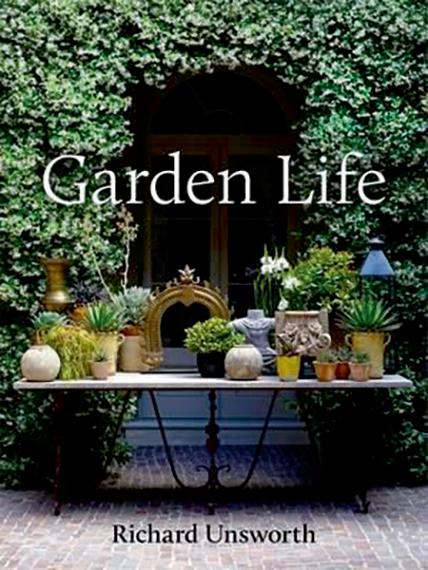
$39.99
These great titles and more available instore. We post direct to you, contact us today to discuss getting your copies posted* *Postage and Handling fees apply.
It’s been little more than a year since Darren Fiddler was named SunRice Grower of the Year for 2021, and now he can add another feather to his cap.

Darrell, who is farm manager of DeBortoli Wines in Bilbul, this month claimed the Lamb Weston Stewardship & Community Award at the 2022 Zimmatic Trailblazer Sustainable Irrigation Awards.
The awards recognise and celebrate farmers who are at the forefront when it comes to responsible irrigation, innovative water management and environmental stewardship.
This year’s entries spanned across Australia, ranging in farm and irrigation types.
The 2022 Supreme Award winner was Simon Burgess of Vaucluse Agricultural Company in Tasmania, who operates a mixed cropping and livestock property farming cereals, faba beans, poppies, potatoes, seed crops and fodder for livestock.
Vaucluse is based in the Northern Midlands of Tasmania, totalling 4448ha, including 2151ha under centre pivot irrigation and 447ha under hard hose traveller irrigation.
Earning the Sustainable Irrigation Management Award is Jaco Pauer of the Pye Group, Parilla, South Australia, whose horticulture property farms potatoes, carrots and onions as well as managing livestock, export hay and dryland cropping.
At Bilbul, DeBortoli Wines farms seasonal rice and other summer crops, and wheat and barley in winter.
Mr Fiddler’s commitment to research and innovation, especially in relation to growing aerobic rice, stood out, as did his collaboration with research programs that benefit the entire industry.
“Darrell has maintained significant areas to support native vegetation and an ethos of incorporating these into the design and operation of the farm operations,” the judging panel noted.
“His openness to inviting not only researchers, but the community, school groups and industry onto the property and sharing his knowledge so openly were key factors in Darrell being awarded this accolade.”
Mr Fiddler expressed gratitude noting he was “humbled” to even be nominated for the Trailblazer Awards.
“To receive recognition for the way we farm to improve biodiversity is great because it has always been front and centre of our daily farming practices and the designing of farm layouts,” he said.
“As far as being involved in research goes, working with the PHD students and researchers is something I really enjoy doing.
“I have learned so much from them and built excellent working relationships through the on farm research they do with us.”
In commenting on the awards, Lamb Weston’s vice president and general manager Oceania Simone Anderson said Mr Fiddler demonstrates some of the values “that we hold in high regard at Lamb Weston around conserving natural resources by supporting sustainable agricultural practices”.
“Farmers like him being involved in research is so important, because the best agricultural research is guided by the growers who will eventually put it into practice,” she said.
249 Cressy Street, Deniliquin. Phone 5881 2080. www.deni.com.au
James Craft of Zimmatic ANZ said they were delighted with the growth of the awards in Australia in only the second time it has been offered, and proud to be able to recognise the outstanding winners of 2022.
“The awards are an opportunity to help showcase the innovative farming operators who will influence future generations and help to bolster even further Australia’s success story as global leaders in sustainable and profitable farming,” he said.






